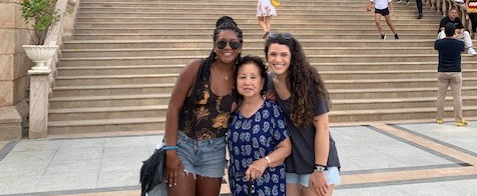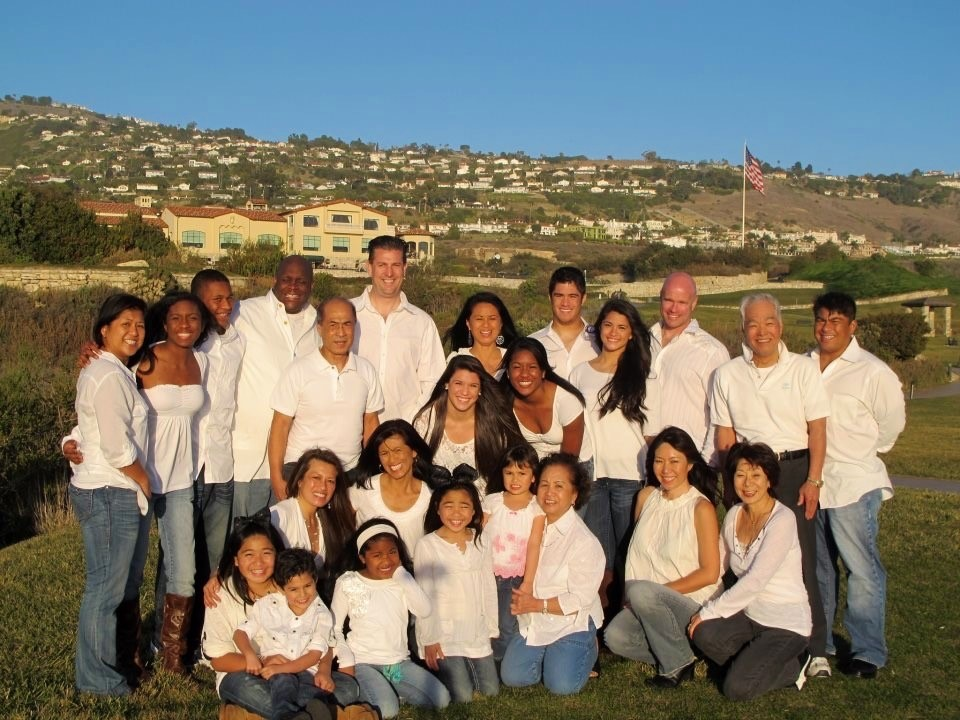 1. Asian, Hawaiian, Pacific Islander, and South Asian are broad terms that encompass a large geographic area. Which term do you most identify with and which island or country?
1. Asian, Hawaiian, Pacific Islander, and South Asian are broad terms that encompass a large geographic area. Which term do you most identify with and which island or country?
I mostly identify with the term Asian. I am half Filipino and my grandparents immigrated from the Philippines in the 1960s.
2. What can you share to help educate your coworkers about the history, culture, and achievements for your specific heritage?
The Philippines and the United States have had a long relationship with educating health care providers in the Philippines and then sending them to the United States to practice. When the U.S. colonized the Philippines in the late 1890’s, the U.S. government and American missionaries westernized the health care system in the Philippines. Though the country was colonized by Americans, visas to the United States were limited. Therefore, many Filipinos started going to medical or nursing school with the hopes of immigrating to the United States for better economic opportunities. In 1948, the Exchange Visitor Program was established which allowed individuals from other countries to study in the U.S. for two years. This program was made in hopes to that people would bring back American ideologies to their home countries. However, after World War II, there was a shortage of nurses due to the low wages and poor working conditions. Therefore, the United States then relied heavily on foreigners to fill the declining health care workforce. In 1965, the Immigration and Nationality Act (INA) permitted migrant nurses and physicians the opportunity to petition to stay in the United States permanently. By 1967, the Philippines became the leading country in exporting nurses to the United States. Over the past 60+ years, more than 150,000 nurses migrated from the Philippines to the U.S. to help fill gaps in the nursing field, while statistically working in understaffed and poorly supplied health care facilities.
This program was one of the reasons why my maternal grandparents were able to immigrate to the United States. My Lola (grandma in Tagalog) and late grandfather went to UERM Medical School in the Philippines. They completed their residency in Boston, MA. My grandfather became a cardiologist. My Lola dreamed of becoming a pediatrician, however, when she immigrated to the United States, my grandparents only had one car, and she did not know how to drive. Therefore, she switched her specialty to be an anesthesiologist because the hospital was closer to their home in relation to where the pediatric rotation was. She became one of the first female anesthesiologist at Boston University Hospital in the late 1960s.
Cachero, P. (2021, May 30). How Filipino nurses propped up America’s medical system. Time. Retrieved May 20, 2022, from https://time.com/6051754/history-filipino-nurses-us/
3. What does this recognition month mean to you and is there a specific way you celebrate
This recognition month reminds me of all my grandparents, specifically my Lola, gave up to give our family the opportunity to live our authentic self. My family takes great pride in being Filipino and often times, when you look at our family you would not know that we 1st and 2nd generation. This month reminds me of the resiliency and close knit community my culture gives me.
We look forward to cheering my sister on next summer in the World Cup as she represents the Philippines in their first ever World Cup in Australia/New Zealand!

Brittanee Randle is a proud member of Team Rady working as a Clinical Nurse III in our Emergency Care Center. Brittanee also services on our DEI Council.